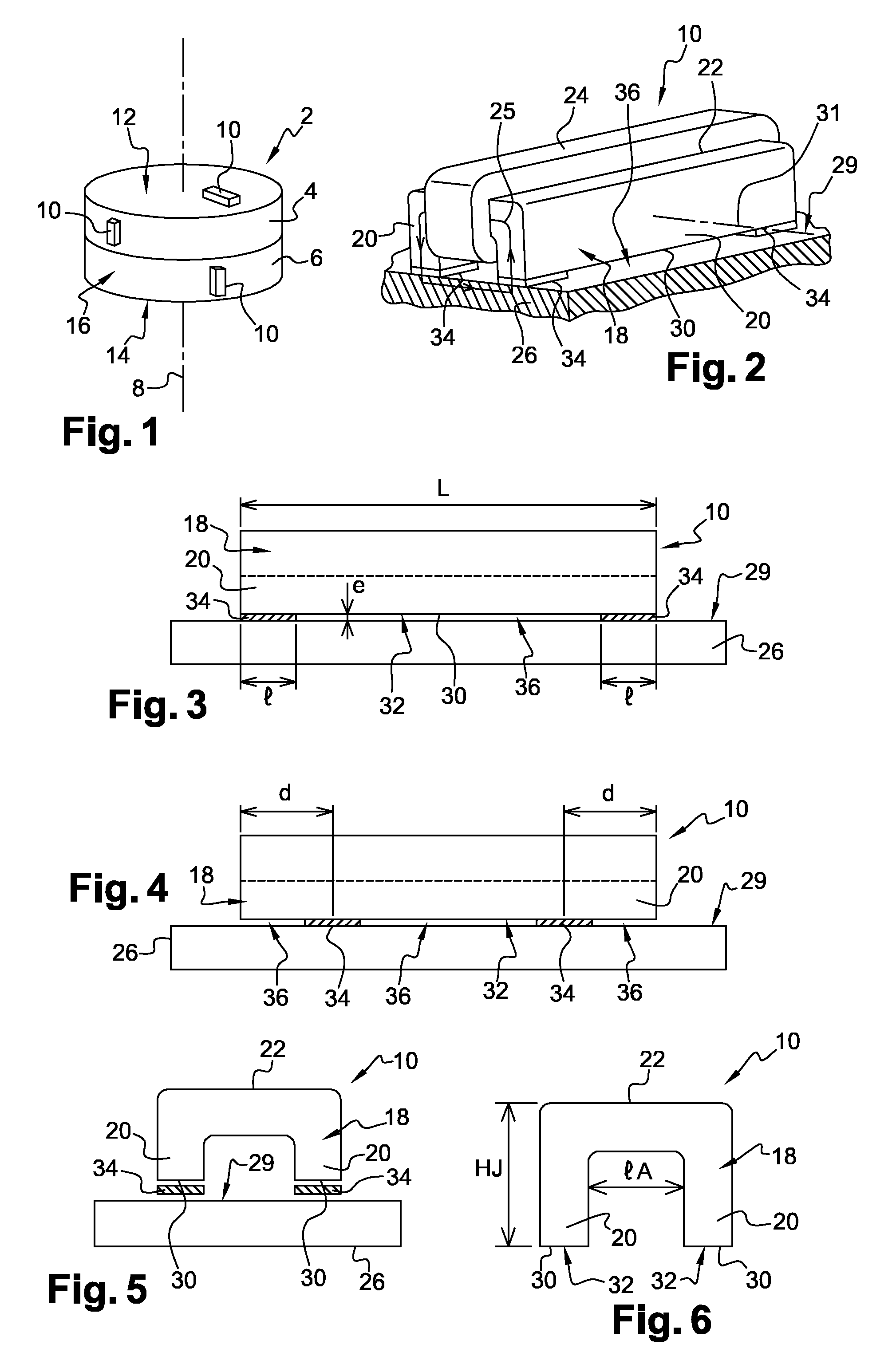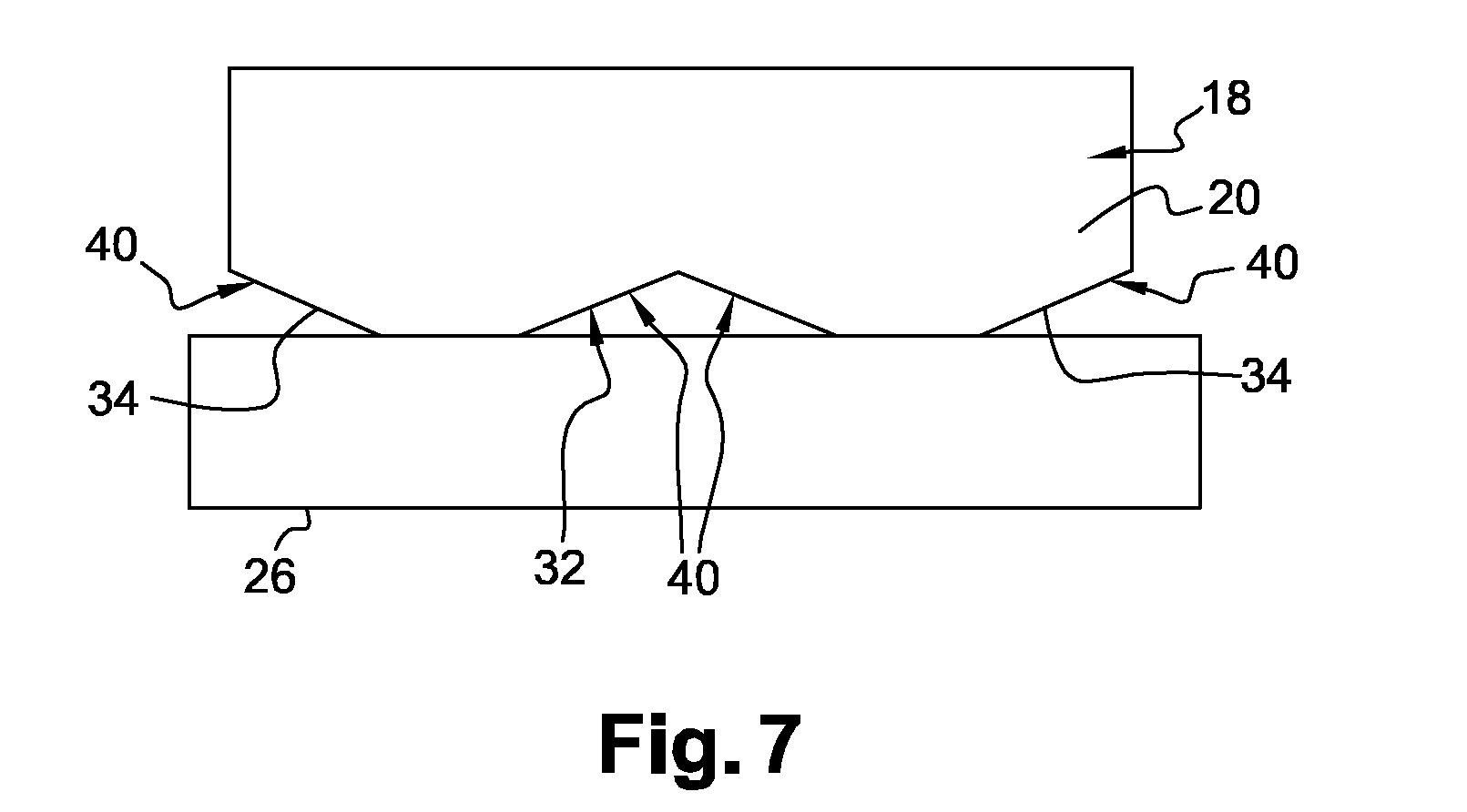Vulcanizing press for tire blanks provided with inductors
a technology of inductors and vulcanizing presses, which is applied in the direction of transformers/inductances, transformers/reacts, electrical/magnetic/electromagnetic heating, etc., can solve the problems of high cost, inductance against the component liable to generate noise in excess of 80 decibels, and generate wear on the surface of the armature, etc., to achieve the effect of slowing down the transfer of hea
- Summary
- Abstract
- Description
- Claims
- Application Information
AI Technical Summary
Benefits of technology
Problems solved by technology
Method used
Image
Examples
Embodiment Construction
[0043]FIGS. 1 to 3 illustrate a press2 used for curing green tire blanks for wheels. These tires are intended for example for vehicles of the light vehicle type, passenger cars, utility vehicles, heavy vehicles or even construction plant machinery.
[0044]The press 2 comprises two parts, an upper part 4 and a lower part 6, which are able to move in sliding relative to one another in the vertical direction which is that of a main axis of symmetry 8 of the press, in order to open and close the press. These parts contain mold portions that are used to give the tire its definitive shape when the green tire blank is being vulcanized.
[0045]To this end, the press is equipped with inductors 10 arranged against various parts of the press, on the external faces thereof, in order to afford the heat necessary to vulcanize the rubber which forms most of the green tire blank held in the press. Provision may thus be made for one or more inductors to be positioned against an upper 12 or lower 14 hori...
PUM
| Property | Measurement | Unit |
|---|---|---|
| temperatures | aaaaa | aaaaa |
| temperatures | aaaaa | aaaaa |
| length | aaaaa | aaaaa |
Abstract
Description
Claims
Application Information
 Login to View More
Login to View More - R&D
- Intellectual Property
- Life Sciences
- Materials
- Tech Scout
- Unparalleled Data Quality
- Higher Quality Content
- 60% Fewer Hallucinations
Browse by: Latest US Patents, China's latest patents, Technical Efficacy Thesaurus, Application Domain, Technology Topic, Popular Technical Reports.
© 2025 PatSnap. All rights reserved.Legal|Privacy policy|Modern Slavery Act Transparency Statement|Sitemap|About US| Contact US: help@patsnap.com



